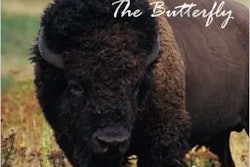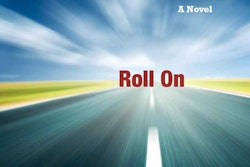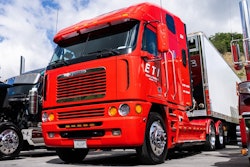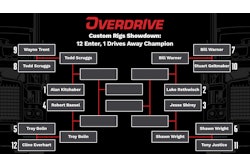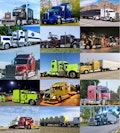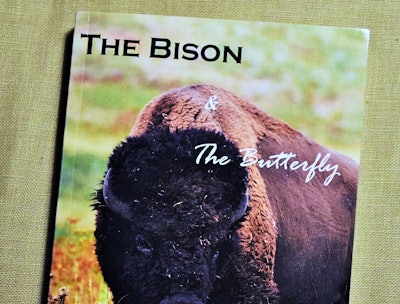
 Former owner-operator, journalist and novelist Fred Afflerbach
Former owner-operator, journalist and novelist Fred AfflerbachFormer household-goods-hauling owner-operator Fred Afflerbach ended his last novel, Roll On, on something of a cliffhanger. The protagonist, moving van owner-operator Ubi Sunt, hauling in his famous “Old Ironsides” 1950s Peterbilt cabover, gets caught in a blizzard with truck trouble and shut out of his rig as the cab hydraulics froze up. With nothing to keep warm but the still purring engine block, he settles in against it, pulling S-O-S signals with puffs of smoke from the stacks, and hopes he’ll make it through.
Regular readers will recall Texas-based Afflerbach and Roll On, which in 2012 upon its release I dubbed one of the best works of fiction or nonfiction penned by an owner-operator current or former that I’d read. In many ways, it was an immortalizing work for the trailblazing independents of the 50s, 60s and 70s. At that time, Afflerbach made mention of work he had begun putting into a sequel. Four and some years later, that book, “The Bison & the Butterfly,” is out now. It’s a road novel of the classic sort, and one that builds on the foundations laid by its predecessor — Afflerbach’s empathic, often hilarious, moving depiction of two generations of men coming back together through lived experience after separation and loss is a master turn in the literary arts.
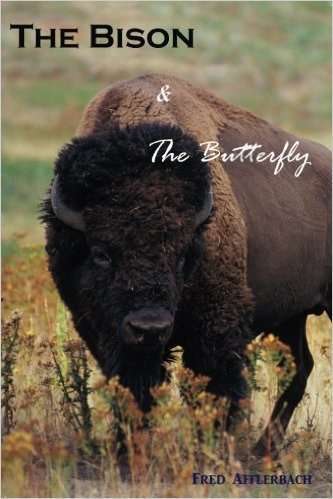 Pick up an ebook or print copy of Afflerbach’s new book via this link to The Bison and the Butterfly‘s page on Amazon. Alternately, search the title via other retailers.
Pick up an ebook or print copy of Afflerbach’s new book via this link to The Bison and the Butterfly‘s page on Amazon. Alternately, search the title via other retailers.“People are already clamoring” for part three, Afflerbach says, laughing a little. “This one took four years. The first one took two. The next one at this rate will take eight” to complete. In the meantime, there’s plenty to chew on with this latest effort.

From the beginning of the new book I was anxiously awaiting confirmation of just whether Sunt had survived his night huddled against the idling engine of the ancient cabover. How long would the fuel last? Did it in fact last? It’d be more than 50 pages and many hitchhiked miles between Philadelphia and the Texas panhandle before I got a definitive confirmation Sunt, the bison of the book’s title (nearing extinction, rarely seen but larger than life in memory), was even still alive when the action of the book takes place, 1992, long after the late-1970s scenes in Roll On. Sunt’s teenage grandson, the butterfly here, begins the tale with a grand subterfuge that drives the action. Jeremy plays hookie from band camp in order to hitchhike his way from Philadelphia to the far reaches of the Texas panhandle to deliver a tough message to his “Grandpa Truck” in person. Sunt’s daughter and son-in-law, Jeremy’s parents, have died in a car crash with a big truck.
Of a piece with Jeremy’s mother’s well-known frustrations with her owner-operator father (well-illustrated in Roll On), her surviving son and Jeremy’s sister, Molly, likewise paternal grandparents in Philly, haven’t been able to find Sunt to inform him of his daughter’s death. A registered letter from the paternal grandfather’s law office is on its way to Sunt’s two-truck fleet’s headquarters by now, however, and Jeremy is determined to get there before it does, to deliver the news in person.
With the last book, Afflerbach set up what will be a familiar situation for some of you, no doubt. Sunt’s daughter and her grandkids in Philadelphia clamored to get Sunt to settle down from his HHG hauling nearby to the grandkids in Philly. In this one, Afflerbach gives the old trucker, nearing retirement, a chance to recommit to family after, obviously, not exactly doing so in the intervening decade and more.
After the dominoes of a round of scenes fall as Jeremy hitchhikes with a series of truckers and, then, a memorable traveling dictionary salesman, the young man’s arrival at Sunt’s two-truck-fleet headquarters coincides with a huge plains thunderstorm — and the shortly following revelation that the Old Ironsides cabover has gotten a full custom restoration treatment by the now 70-some-year-old owner-operator. The rig’s destined for a trucking museum in Iowa that just may have its corollary in the real world.
Ubi Sunt indeed did survive that cold night, after all — but not without consequences that will prove pivotal during his and young Jeremy’s “backhaul” in the classic Pete to return Jeremy to his school’s parking lot in time for the band camp buses’ return.
Along the way in both directions, Afflerbach makes good on one of his intentions with this novel, evoking the brother- and sisterhood of the road among all manner of travelers, that “common denominator that you’re kind of vulnerable, and you’re not home — anything can happen,” he says. And when it does, “you all come together out there,” no matter your station in life. “I read something somewhere that the people out on the road who are destitute and having trouble” in their own lives “are the most likely to lend a hand to help others.”
And of course “all of the different characters,” he says. “You meet all kind of interesting people out on the road.”
It’s a worthy read, well worth the investment of time and $12.99 (print) or $7.99 (ebook), with an absolutely original ending that will leave you once again clamoring for more, that’s sure. Oh yeah, that part three everybody’s been wondering about: “I’d like to go back to the beginning of this character,” Afflerbach says, “his early years and trucking history back in his first years – the late 1940s and 1950s.”
Stay tuned.
Catch an excerpt from the second big section of The Bison and the Butterfly, “The Backhaul,” via the following link:





